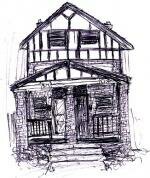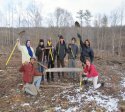NRC hides information about high probability dam breaks
The more one studies the behavior of the NRC, the more worried you get about this regulators behavior. Of course, was can start with the fact that the Nuclear Regulator Commission has never denied a reactor license to anyone how applies for one. Does not matter if the selected site is on an earthquake fault or down river from an degraded dam or has an evacuation planning area which includes impossible sites like Manhattan. You want to build a reactor, they will work with you till the opposition is worn down and then grant you the license. From many anti-nuclear activists perspective, having fought the agency long and hard, this is exactly what their purpose is – to shield the industry from criticism and give it what ever it needs to function, at the cost of public safety.
The latest in the long line of NRC scandals is about dams. On March 6th of this year, the NRC issued a redacted report on nuclear safety near dams in the US. While reporting on over 30 reactors in danger of flooding (including not surprisingly Fort Calhoun which nearly melted down last summer from flooding), the NRC redacted (left out) the following information about the Jocassee Dam in in South Carolina.
A more recent NRC letter (USNRC 2009) indicates that the NRC staff’s position is that a Jocassee Dam failure is a credible event and needs to be addressed deterministically. In the same letter, NRC staff expressed concerns that Duke has not demonstrated that the Oconee Nuclear Station units will be adequately protected.
The full (unredacted) report was recently leaked by Greenpeace. So the NRC is keeping this information about the failure to protect the public from the public why? The NRC claims that this information was left out because other government agencies felt it was a security risk. The principal author of the report Richard H. Perkins, a risk engineer with the NRC, filed a complaint with the agency’s Inspector General last month, in which he suggested that NRC staff had improperly redacted information from the public version of his report “to prevent the disclosure of this safety information to the public because it will embarrass the agency.”

This is what a safe reactor looks like, says the NRC
The reactor owner Duke Energy says the chance of the dam failure is less than a million to 1. But in 2010, the NRC analysis estimated the odds in any given year of a large rock-fill dam similar to the Jocaseee Dam failing were about 1 in 3,600. That works out to about a 1 in 163 chance over the remaining 22 years on Oconee’s operating license. Or as Larry Criscione, the NRC engineer who contacted Congress over the Oconee issue, said “far better odds than drawing a straight in poker” and “significantly better odds — roughly 8 times better — than rolling Yahtzee.
You want to bet your life on that?
“What is not known is the likelihood that, after the flood waters recede, Duke Energy will be able to re-establish cooling to the containment buildings,” Criscione wrote. “If they cannot, then a dam break at Jocassee Lake will cause a Fukushima-style accident in Oconee County, South Carolina. Except instead of blowing out to sea as happened in Japan, depending on the winds, the radioactivity will be blown over Columbia or Charleston or Atlanta or Huntsville or Knoxville or Charlotte. Whatever the winds, the radioactive fallout will occur over farmlands and not merely over the ocean.”
“Lucky” Fukashima forces 340,000 people from their homes who continue to live in temporary housing.
Much of this article was lifted from a great piece in the Huffington Post, which i would encourage you to read.

Dam failures happen and kill people
- Paxus's blog
- Login to post comments
- Feed: Paxus Blog
- Original article








